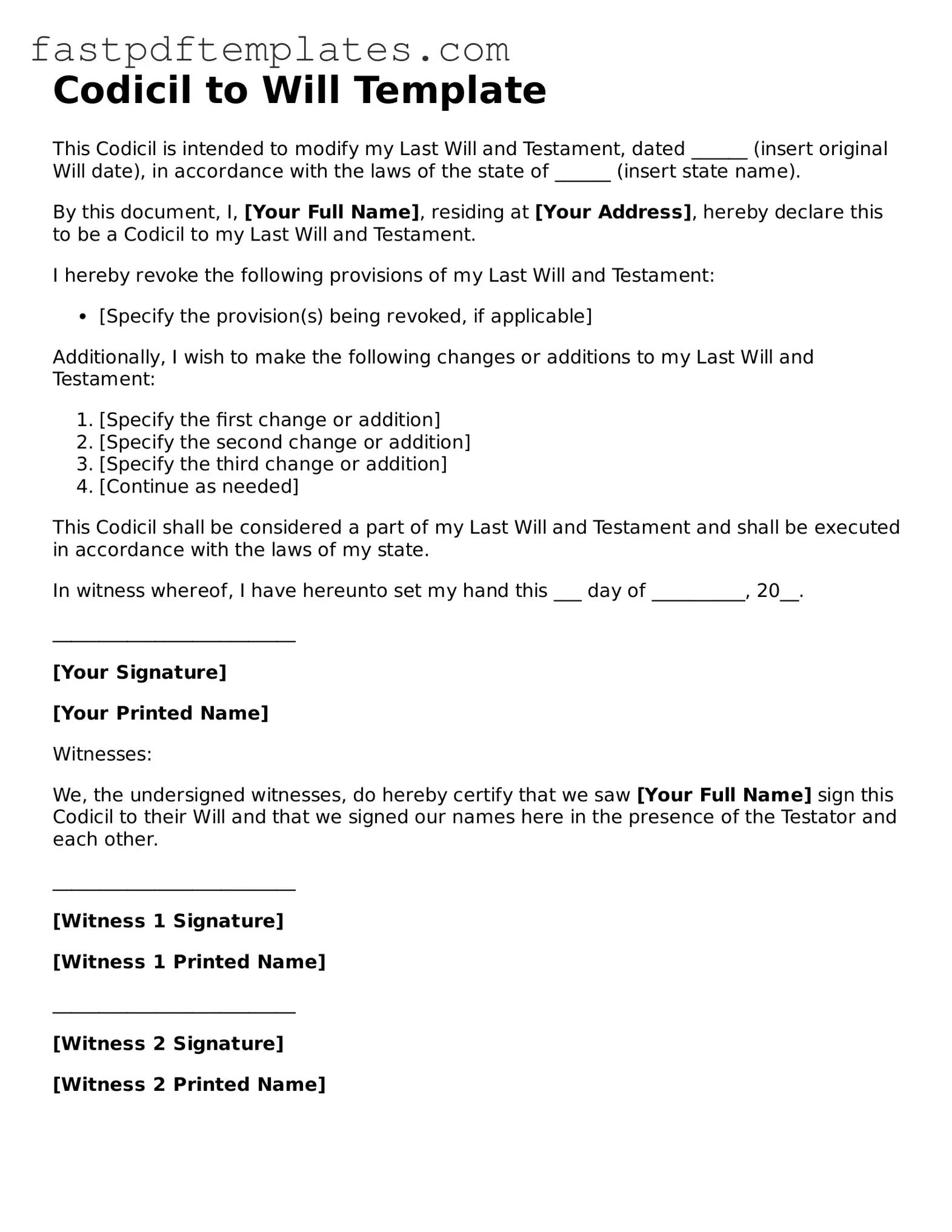Codicil to Will Template
This Codicil is intended to modify my Last Will and Testament, dated ______ (insert original Will date), in accordance with the laws of the state of ______ (insert state name).
By this document, I, [Your Full Name], residing at [Your Address], hereby declare this to be a Codicil to my Last Will and Testament.
I hereby revoke the following provisions of my Last Will and Testament:
- [Specify the provision(s) being revoked, if applicable]
Additionally, I wish to make the following changes or additions to my Last Will and Testament:
- [Specify the first change or addition]
- [Specify the second change or addition]
- [Specify the third change or addition]
- [Continue as needed]
This Codicil shall be considered a part of my Last Will and Testament and shall be executed in accordance with the laws of my state.
In witness whereof, I have hereunto set my hand this ___ day of __________, 20__.
__________________________
[Your Signature]
[Your Printed Name]
Witnesses:
We, the undersigned witnesses, do hereby certify that we saw [Your Full Name] sign this Codicil to their Will and that we signed our names here in the presence of the Testator and each other.
__________________________
[Witness 1 Signature]
[Witness 1 Printed Name]
__________________________
[Witness 2 Signature]
[Witness 2 Printed Name]
